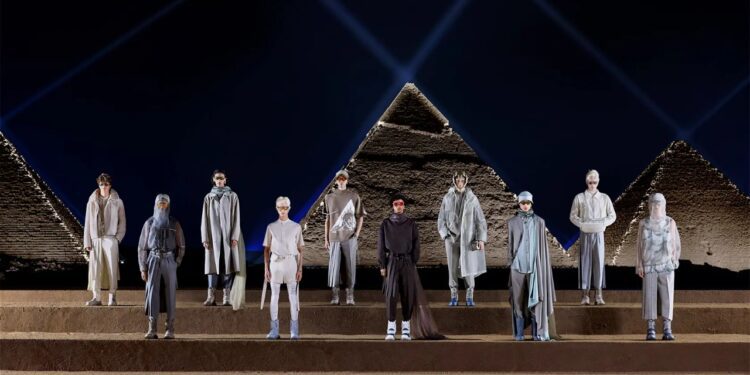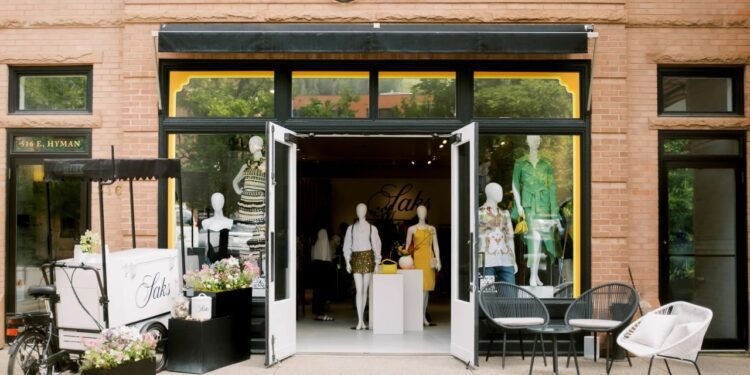Written by: Naomi Pullan, Creative Director
Having worked in the fashion industry across Europe for over a decade — and now leading creative direction in China — I’ve witnessed firsthand how fashion businesses operate on both sides of the globe, and where they can learn from one another. The East and West approach fashion through vastly different lenses: one rooted in heritage and concept, the other driven by agility and scale. But in today’s interconnected economy, the most successful brands borrow wisely from both.
As global consumer expectations evolve, fashion businesses can no longer afford to rely solely on what’s worked regionally. Understanding the fundamental differences — and opportunities — between the Western and Eastern markets is essential for any brand looking to grow, innovate, and remain culturally relevant.
Conceptual Depth vs. Analytical Creativity
In the West, particularly in fashion capitals London, Paris, Milan, creativity is often anchored in deep conceptual thinking. Brands are built on a strong heritage, narrative, and craftsmanship. Whether in established houses or emerging design schools, the emphasis is on forming strong concepts and long-term brand building. While Western designers do take data and trend forecasts into account, their work is still largely driven by personal inspiration and an intuitive creative process, resulting in greater individuality and differentiation among brands.
China, by contrast, has become a masterclass in commercial agility and analytical creativity. It’s where nearly every aspect of life — from public parks to digital platforms — is optimized for engagement and monetization. Fashion is no exception. Platforms like Douyin (TikTok) and Xiaohongshu (RedNote) blur the lines between content, commerce, and entertainment, creating multi-dimensional environments for brands. With access to massive consumer datasets via platforms like Taobao and Tmall, brands are designing not just for aesthetics, but also in direct response to real-time customer behavior. This method allows for pinpointed trend forecasting, SKU optimization, and hyper-targeted collections. Leading Chinese brands with strong in-house creative processes often set the tone for the market — their innovations are quickly imitated, pushing them to reinvent and deliver newness to stay ahead continually.
Sustainability as Standard vs. Sustainability as Supplement
In Western fashion, particularly among the new generation of designers, sustainability is non-negotiable. In design universities, embedding sustainable thinking from the concept stage is essential. A project that doesn’t address material impact or product lifecycle is often viewed as lacking depth and unlikely to be recognized as quality design.
In China, sustainability is slowly gaining traction but remains a secondary consideration. Scale, speed, and accessibility often outweigh long-term environmental responsibility. While green innovations are emerging—especially in textile development and supply chain digitization—sustainability still tends to take a back seat to trend responsiveness and competitive pricing.
Operational Speed vs. Strategic Depth
Fashion business cultures differentiate significantly in how decisions are made and executed. In China, brands operate within a landscape driven by real-time consumer data, rapid decision-making, prototyping, and social feedback loops. Collections are launched quickly, with every stage—from design and merchandising to marketing—tested for fast feedback and swiftly adjusted. Long-term brand impact is often overlooked in favor of immediate results and responsiveness.
In contrast, many Western brands adopt a more deliberate and layered approach. Strategy is developed over time, through multiple rounds of research, discussions, and internal alignment. There’s a strong emphasis on protecting brand equity, maintaining consistency, and carefully evaluating long-term implications. This can produce deeply resonant work, but it can also create friction in a culture increasingly defined by immediacy.
Digital Ecosystems Are Redefining the Function of Physical Stores — but East and West Interpret Them Differently
China’s digital retail landscape is an ecosystem that is fast, frictionless, and fully integrated into everyday life. Online grocery and food delivery services, through apps like Meituan, are the norm. In fashion, platforms such as Taobao, Tmall, JD.com, Douyin, and WeChat Mini Programs have redefined the shopping experience. Consumers can browse, compare, purchase, and return items without leaving their homes. Stores, as a result, are no longer necessary for basic commerce. Algorithms learn shopping habits, social platforms drive trends in real time, and brands pivot accordingly. Shopping has become entertainment, habit, social engagement, and more convenient than ever. As a result, the role of the physical store has shifted. With most transactions handled digitally, Chinese brands are placing greater emphasis on personalized service to maximize in-store sales. Not all sizes are displayed on the shop floor; instead, sales associates act as personal guides, retrieving items upon request. Fitting rooms often lack mirrors, prompting customers to step outside where a sales assistant is ready to offer tailored styling advice. They increase basket size by suggesting complementary items, such as matching tops or jackets that complement the customer’s selection.
In contrast, the West still largely operates on a traditional retail model, where the physical store remains a central component of a brand’s commercial ecosystem. While e-commerce has expanded and omnichannel strategies are growing, many Western fashion houses and retailers rely on physical stores as a key revenue source. Consumers in these markets are more accustomed to self-guided shopping experiences, with all sizes displayed on the shop floor and store associates available for assistance when needed. Certain brands, especially in the sportswear sector, like Alo, Lululemon, and On, foster brand culture through community-driven initiatives, such as running clubs and fitness activities linked to their stores. In the luxury sector, physical stores serve as vital points of contact, providing a sense of service and trust.
Final Thought: Multi-dimensional Thinking Is the Future
Neither East nor West holds all the answers — but each holds key pieces.
By adopting a multi-dimensional mindset, fashion businesses can create highly engaging brands that are culturally attuned, environmentally conscious, digitally fluent, and emotionally resonant. In this future, interactive digital worlds, where entertainment and commerce seamlessly converge, will coexist with culture-driven physical stores that foster community and communicate brand values. Envisioning a world where sustainability can be scaled viably opens the door to innovation and growth.
It’s not about blending for the sake of globalism. It’s about thoughtful integration — taking the best from each system to build something new, relevant, and meaningful for the next generation of consumers.
Website:
www.omnimotions.com









